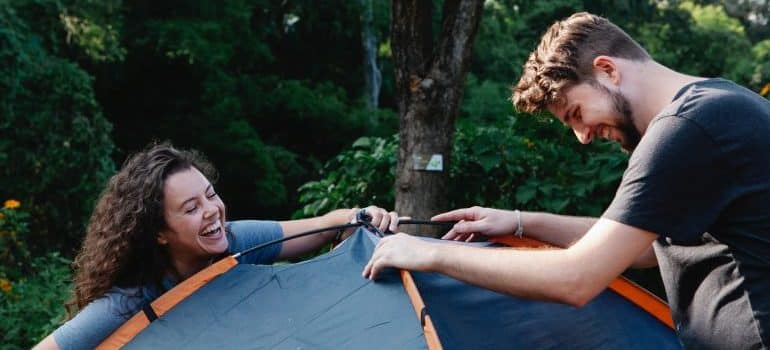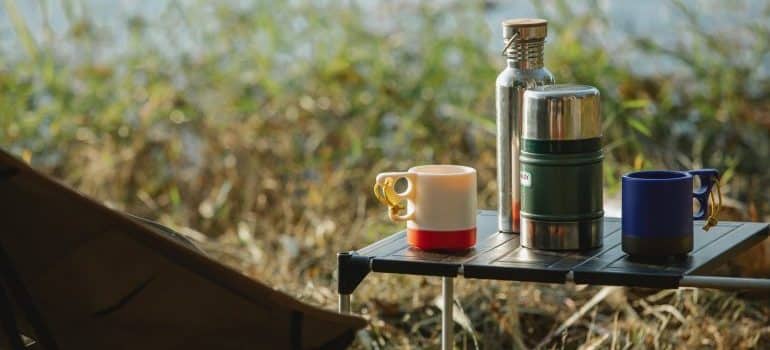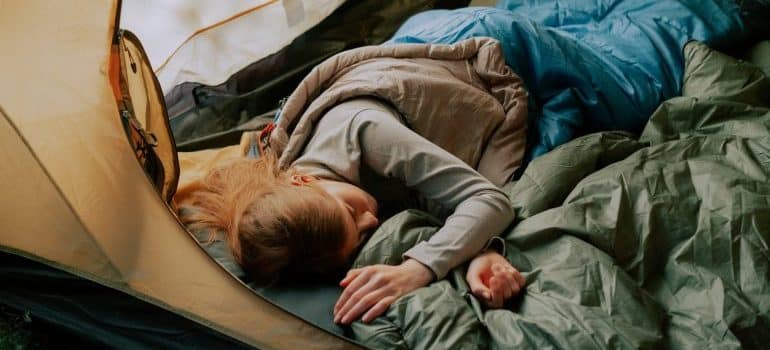How to pack and move your camping gear
Camping gear can be bulky, awkward to carry, and easy to forget if you don’t plan well. Organizing each item is essential, whether moving out of Florida or storing gear. With the right packing steps, you can protect your equipment and save space in your vehicle or storage unit. This guide by one of the longest-standing packing and moving companies in Miami covers practical advice on how to pack and move your camping gear, from tents to cooking tools. So let’s start with the first step: planning what to bring and how to pack it efficiently!
Planning your packing strategy
Before you start packing, take time to organize your camping gear. Knowing what you have and what you’ll use helps avoid overpacking. Group items based on their function, fragility, or how often you’ll need them. Start with these steps.
Assess your camping gear inventory
Lay everything out in one spot. Include your tent, sleeping bags, chairs, cooking tools, lanterns, and clothing. Use a checklist or a simple spreadsheet to track what’s missing or needs cleaning.
Categorize items by use and fragility
Separate gear into these basic groups:
- Sleeping (bags, pads, air mattresses)
- Shelter (tent, tarp, stakes)
- Cooking (stove, utensils, cooler, food containers)
- Clothing (layers, rain gear, footwear)
- Extras (first-aid kit, flashlight, camp chairs)
Fragile items like lanterns or cooksets should be wrapped and packed last.
Create a packing timeline
Don’t leave it for the night before. Before you pack and move your camping gear, start cleaning and sorting it a week in advance. Pack non-essential items first. Keep daily-use gear (like clothes and toiletries) aside until the final day. Label each box or bag clearly. Use waterproof bags for anything that might get damp in transit.

Packing individual items
Each piece of camping gear needs a specific approach to stay clean, safe, and organized during the move. Use heavy-duty bags or bins for storage. Make sure to wrap or pad any items that could break or bend. This section walks you through the best way to pack your essential gear.
Tent
Clean the tent first. Shake out dirt, wipe the fabric, and let it dry completely. If it’s wet, it can grow mold or smell bad during transport. Fold it along its original seams and store it in its carrying bag or a large duffel. Keep poles, stakes, and the rainfly in labeled pouches or plastic bags to avoid losing parts. Pack these next to the tent or tape them to the bag to keep them together.
Sleeping bag
Air out your sleeping bag for a few hours before packing. If it smells or has dirt, give it a quick surface clean or use a front-load washing machine on a gentle cycle. Roll or fold it as directed by the brand. Use a compression sack or a labeled dry bag for better packing. Keep it away from anything damp.
Cooking equipment
Clean all cooking tools. Empty any fuel containers and make sure nothing has leftover food or grease. Stack pots and pans to save space. Use bubble wrap or soft cloths to protect breakable items like camp stoves or ceramic mugs. Store utensils in a sealed plastic box. If your gear includes small items like matches or spices, place them in clear zip bags and label each one.
Clothing and personal items
Sort clothing by type before you pack and move your camping gear: tops, pants, socks, and outerwear. Roll clothes instead of folding to save space. Use duffel bags or vacuum-sealed pouches for better organization. Waterproof bags are ideal for wet or dirty items. Label everything, especially if multiple people’s gear is packed together.
Transportation tips
Once it’s packed, focus on how to load and move your gear safely. The way you arrange items in your vehicle or trailer affects both space and equipment protection. A detailed, printable camping checklist can help structure your packing process. This becomes even more important in Florida, where weather and road conditions can change quickly.
Vehicle loading strategies
Start with heavier items like bins, coolers, or packed tents. Place them low and near the center of the vehicle to help with balance, especially when driving through Florida’s uneven backroads or dealing with sudden weather changes.
Add medium-weight gear, such as sleeping bags, folding chairs, and camp stoves, on top of or around the heavy base. Lighter items like rolled clothing, food bags, and soft coolers should go in last. Use towels or blankets to separate hard items and keep everything in place during the drive. These are some of the most efficient camping gear packing tips for saving space and reducing movement.
To focus on transporting camping gear safely, secure all items with straps if you’re using an open trailer or pickup truck. Sudden stops or sharp turns can shift your gear quickly, especially on Florida highways. If you’re handling a larger setup, consider getting help from local movers in Florida. They can reduce strain and help ensure gear is packed efficiently, especially if you’re heading out on a longer trip.

Using storage containers
Plastic bins with tight lids are some of the best containers for camping gear. They’re water-resistant, stackable, and ideal for organizing camping supplies for travel across Florida. In a humid city like Miami, clear bins also make it easier to find what you need quickly without opening everything in hot or damp conditions.
Label each container and bag clearly. Use waterproof markers or color-coded tape for quick sorting. Keep sharp tools or metal parts in separate hard cases to avoid damaging softer items like sleeping bags or clothing.
If you’re not using your gear right away, consider camping gear storage solutions near your Miami home. Climate-controlled storage in Miami is key for protecting camping gear during moves, especially in South Florida’s heat and moisture. For those storing camping equipment at home, choose an indoor space with low humidity. And avoid garages or sheds that trap heat and moisture during the summer.
Don’t leave without this final gear check
Before you load the car or drop gear into storage, go through this quick checklist. A few extra minutes now can prevent gear damage, missing items, or repacking later. The following steps will help you stay organized and avoid last-minute issues:
- Make sure everything is clean and completely dry
- Sort items by category: shelter, sleeping, cooking, clothing
- Label bins and bags clearly on the outside
- Pack heavier gear at the bottom and soft items on top
- Use padding for fragile equipment and separate it from sharp tools
- Secure anything packed in trailers or open trucks with straps
- Choose storage with climate control if keeping gear long term
- Review your moving insurance for coverage on camping gear
A few simple steps can help protect your gear so it’s ready to go when you are. And if you’re using movers, it’s also a good time to confirm what’s covered by moving insurance, especially for higher-value items like camp stoves or GPS gear.
Make your next trip easier!
Planning a move across Florida or heading out for a weekend in the Everglades? Taking time to pack and move your camping gear properly helps protect your equipment, save time, and avoid stress. Smart choices like using the right containers, reviewing insurance coverage, and finding climate-controlled storage all make a difference. Stay organized, label everything, and you’ll be ready to enjoy your next outdoor trip with less effort.

FAQ: packing and moving your camping gear
Q: What is the most forgotten item when camping?
A: People often forget small but essential items like bug spray, matches, or a first-aid kit. Always double-check your checklist before leaving.
Q: How to bring camping gear on a plane?
A: Pack sharp or flammable items in checked luggage. Use compression bags for clothes and consider renting bulky gear at your destination to save space.
Q: What not to bring on a camping trip?
A: Avoid packing glass containers, heavy kitchen gear, scented cosmetics, or electronics you won’t use. Stick to multipurpose and lightweight items.
Q: How to pack and move your camping gear without a car?
A: Use a rolling duffel or backpack with organized compartments. Public transport, rideshare, or delivery services can help move gear locally.
Q: How do you pack/organize clothes for tent camping?
A: Pack in layers by type—base, mid, outer. Use dry bags or packing cubes to keep clothes organized and dry, especially in humid areas like Florida.
